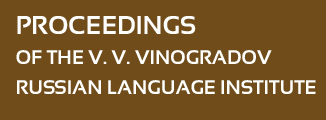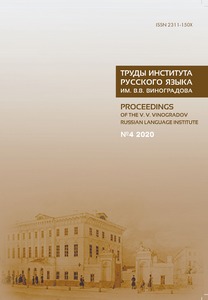ON COLLOQUIAL PLANT NAMES IN THE EXPLANATORY DICTIONARY
Abstract:
Plant names (phytonyms) are described in the main explanatory dictionaries of the modern Russian language mainly as a nomenclature class, a subtype of special vocabulary. As a result, this lexical group in dictionaries is unreasonably reduced. Colloquial phytonyms, especially modern ones, have not yet been suffi ciently described in explanatory dictionaries. The paper attempts to analyze different types of colloquial phytonyms and their interpretation in dictionaries. Common lexemes may be used as elements of botanical nomenclature. In special usage, Latin names are more often preferred from synonymous nominations. Unusual plant names can be reinterpreted as substandard ones (ломонос ‘clematis’, дынное дерево ‘papaya’ etc). Dictionaries do not sufficiently reflect the plant names ambiguity: often one lexeme can be used as the nomenclature name of one plant and as the common name of another (for example, герань also ‘colloquial name of pelargonium’, жасмин ‘Jasminum’ and ‘Philadelphus’). In addition to the old substandard names, new lexical units appear in the language (декабрист ‘Christmas cactus’ vs. шлюмбергера ‘Schlumbergera’, денежное дерево ‘money tree’ vs. толстянка ‘Crassula’, тёщин язык ‘Mother-in-Law’s Tongue’ vs. сансевиерия ‘Sansevieria’).


